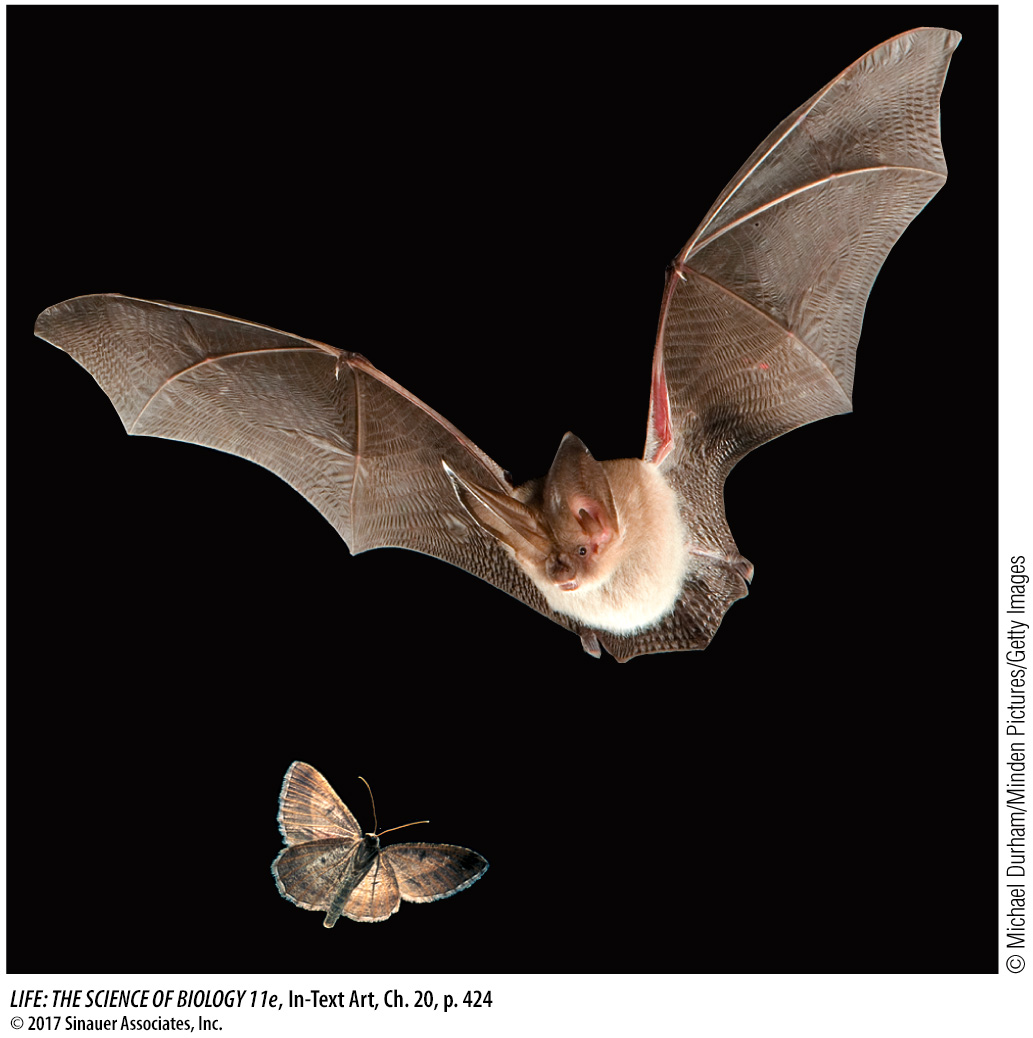Chapter Introduction
20
key concepts
20.1
20.2
20.3
20.4
20.5
20.6
Processes of
Evolution
PART SIX The Processes and Patterns of Evolution

investigating life
An Evolutionary Arms Race Between Bats and Moths
Many species of bats roost by day and fly out as night approaches. The mass exodus of thousands or even millions of bats from a roost is an impressive sight, often attracting crowds of human bat-
Most bats catch insects in flight at night. About 50 million years ago, bats evolved the ability to echolocate, which allows them to detect flying insects (such as moths) in darkness. The bats produce ultrasonic sounds, and compare these outgoing sound pulses with the returning echoes of the pulses that bounce off the flying moths. Because bats are among the greatest threats to night-

Many groups of night-
As moths get better at avoiding bats, why don’t the bats starve? Because populations of bats are evolving too. In each generation, the individual bats best able to detect and capture flying insects get the most food, which allows them to put the most effort into reproduction. Their offspring inherit their prey-
How do complex traits like echolocation, or the ability to avoid detection by echolocation, evolve in the first place?